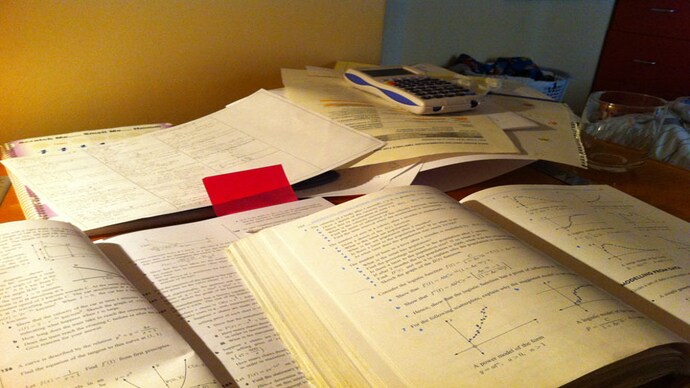UPSC CDS Exam (II) 2014: Paper pattern and Syllabus
The candidates will have to qualify a written test and an interview for personality and intelligence in order to be selected.

The Union Public Service Commission (UPSC) is conducting Combined Defence Services Exam (CDSE) II for the session 2014 to shortlist candidates at 464 posts in various departments such as Indian Military Academy, Indian Naval Academy, Air Force Academy and Officers Training Academy. The application process for the same has ended.
Candidates will have to qualify a written test and an interview for personality and intelligence in order to be selected.
Here's the syllabus and the paper pattern:
For Admission to Indian Military Academy, Indian Naval Academy and Air force Academy:
Subject: Durations: Maximum Marks
English: Two hours: 100 marks
General Knowledge: Two hours: 100 marks
Mathematics: Two hours: 100 marks
For Admission to Officers:
Subject: Durations: Maximum Marks
English: Two hours: 100 marks
General Knowledge: Two hours: 100 marks
Syllabus:
English: The question paper will be designed to test the candidates' understanding of English and workmanlike use of words.
General Knowledge: It includes current events and matters of everyday obeservations and exeperiences in their scientific aspects. The paper will also include questions on History of India and Geography.
Elementary Mathematics
Arithemetic
Number System - Natural numbers, Integers, Rational and Real numbers. Fundamental operations addition, substraction, multiplication, divison, square roots, decimal, fractions. Unitary method, time and distance, time and work, percentages, applications to simple and compound interest, profit and loss, ratio and proportion, variation.
Elementary Number Theory: Divison algorithm, Prime and composite numbers. Tests of divisibility by 2,3,4,5,9 and 11. Multiples and factors, Factorisation Theorem, H.C.f and L.C.m, Euclideen algorithm, Logarithms to base 10, laws of logarithm, use of logarithm tables.
Algebra
Basic Operations, simple factors, remainder theorem, H.C.F, L.C.M. Theory of polynomicals, solutions of quadratic equations, relation between its roots and coefficients (Only real roots to be considered). Simultaneous linear inequations, linear equations or inequations in two variables or quadratic equations in one variablbe and their solutions. Set language and set nootation, Rational expressions and conditional indentities, Laws of indices.
Trigonometry
values of Sine x, cosine x and tangent x, simple trigonometric identities, use of trigonometric tables, simple cases of heights and distances
Geometry
Lines and angles, planes and plane figure, theorems on (i) Properties of angles t a point (II) Parallel lines, (iii) sides and angles of a triangle, (iv) Congruency of triangles, (v) similar trianagles, (vi) Concurrence of medians and altitudes (vii) Properties of angles, sides and diagonals of a parallelogram, rectangles and square (viii) Circles and its properties including tangents and normals (ix)Loci.
Mensuration
Areas of squares, rectangles, parallelograms, triangle and circle. Areas of figure which can be split up into these figures (Field Book), surface area and volume of cuboids lateral surface and volume of right circular cones and cylinder, surface area and volume of spheres.
Statistics
Collection and tabulation of staticticsl date, graphical representation, frequency polygons, histograms, bar charts, pie charts etc. measures of central tendency.
The examination will be conducted at Agartala; Ahmedabad; Aizwal; Allahabad; Bangalore; Bareily; Bhopal; Chandigarh; Chennai; Cuttack; Dehradun; Delhi; Dharwar; Dispur; Gangtok; Hyderabad; Imphal; Itanagar; Jaipur; Jammu; Jorhat; Kochi; Kohima; Kolkata; Lucknow; Madurai; Mumbai; Nagpur; Panaji; Patna; Port Blair; Raipur; Ranchi; Sambalpur; Shillong; Shimla; Srinagar; Thiruvananthapuram; Tirupati; Udaipur; Vishakhapatnam on October 26.